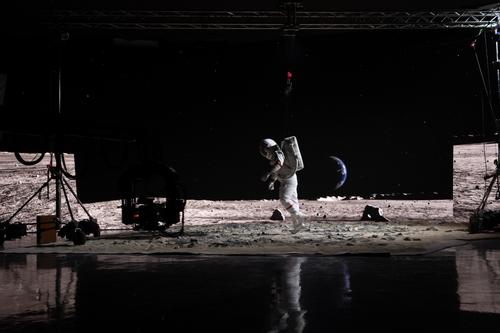Mo-Sys tracks the stars
Mo-Sys has created a unique tracking system that uses optical techniques, rather than mechanical wheel encoders to track pedestals and ensure graphics used in Virtual Reality (VR) and Augmented Reality (AR) environments remain firmly anchored in their correct position – no matter how complex the movements of broadcast cameras are.


Called StarTracker, the system cleverly utilises retro-reflective stickers that are randomly attached to the studio ceiling. The stickers – the ‘stars’ in the sky – form a map that is key to locating the broadcast cameras in VR programming. Light from an LED ring around the StarTracker’s navigation camera, mounted to a pedestal or crane, is reflected by the ‘stars’, giving the StarTracker’s location in the map. Once the ‘zero’ position and other criteria have been established, the navigation camera transmits the location data to the graphics engine producing the virtual environment. Initial set up can be achieved in three hours, after which no further calibration is needed in that studio.
“The absolute optical tracking technique removes the ‘drift’ problems often associated with mechanical methods,” explains Michael Geissler, the CEO of Mo-Sys Engineering. “This ‘drift’ often results in graphics that slowly drift away from their true position in the real world. StarTracker completely overcomes that problem and, in fact, its absolute precision means that even 360 degree pans present no problem to directors who wish to utilise the full potential of the system. Our ‘stars’ – even though placed above studio lights - are resilient to those lights.”
The system is already widely used by studios in England, Germany, India, Norway, Bulgaria and Slovakia.




